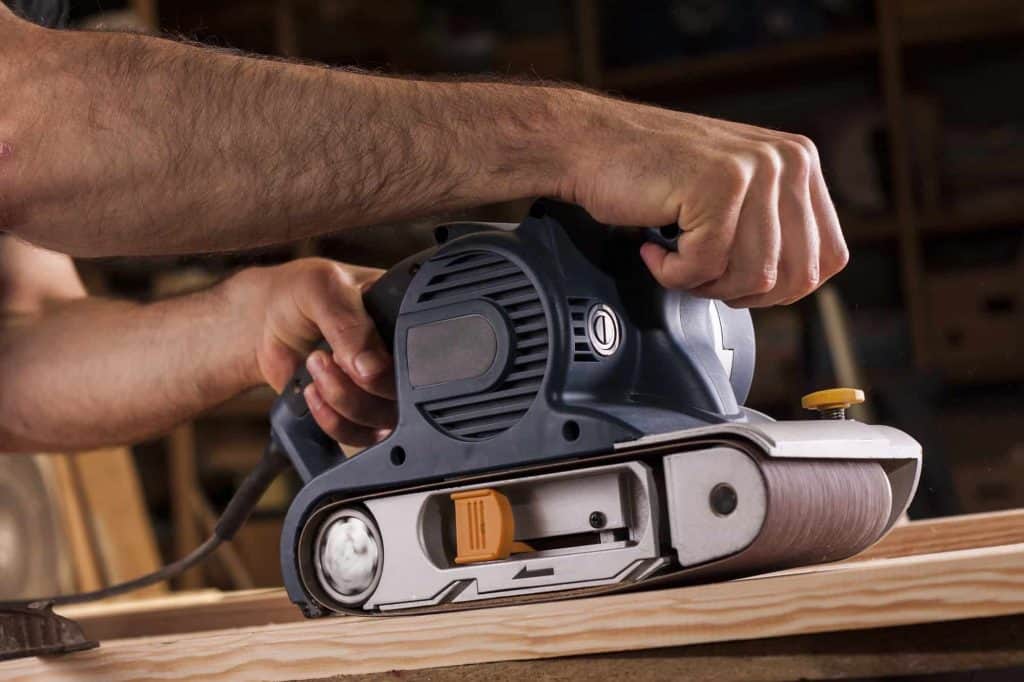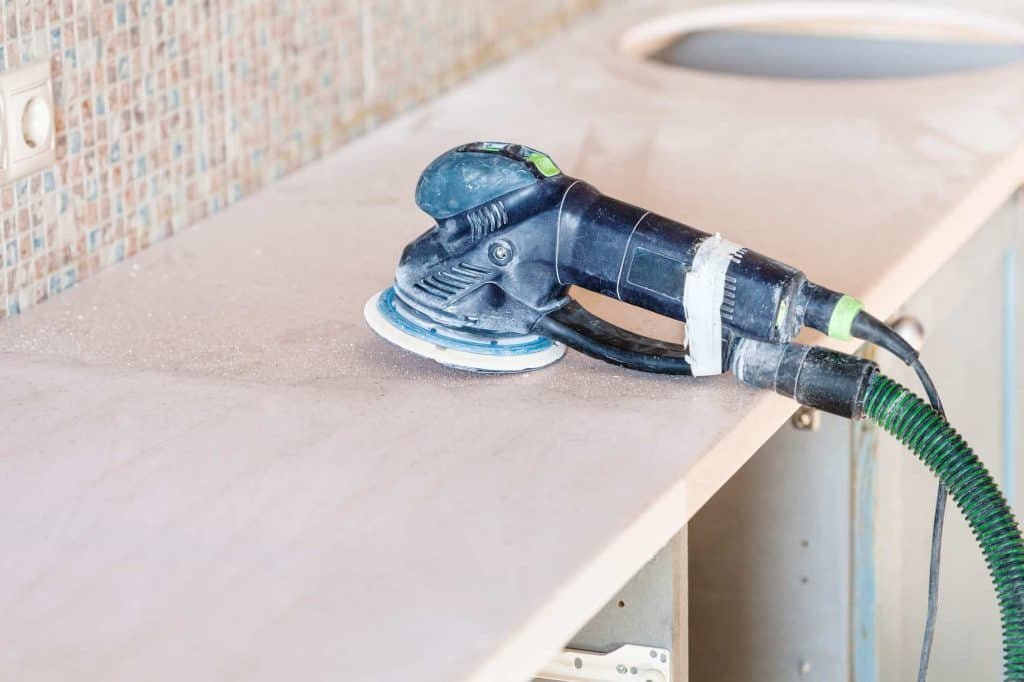Drum sanders are a useful addition to any woodworking shop. However, with the large outlay required to purchase one, it’s natural to wonder if it’s worth the investment.
Drum sanders are worth it if you do a lot of fine surfacing. Similarly, they work well on sanding figured wood that is harder for planer blades to handle. However, if your work mostly includes removing large amounts of wood and stock surfacing, it would be cheaper to rent one when you need it.
The rest of the article will take a closer look at drum sanders to help you decide on whether you should invest in one or not. We will discuss what they can be used for and provide you with comparisons and other suitable options to consider.
Are Drum Sanders Worth It? Should I Get One?
A drum sander is an excellent tool that comes in handy when you need to smooth a wide range of surfaces, including wide panels and narrow strips (source: Wood Craft). The final products, delivered quickly, have an excellent layer of consistency and thickness.

A drum sander is a good investment if you do a lot of fine surfacing and sanding, and they are designed to work quickly in these applications. However, if you do more abrasive planing and coarse grit surfacing, you may be better served investing in other equipment like a planer.
Unfortunately, drum sanders are not cheap, and if you are on a budget, it might not be the best option. For many DIY woodworkers, it’s hard to justify the purchase, which is why you might want to consider renting one when needed or taking your materials to a bigger shop.
However, keep in mind that hiring a drum sander may not be the best approach to take if you work on multiple large-scale projects per year. The renting costs can add up pretty quickly, and with over 5-10 such projects in a year, you may have spent as much money as you’d spend on buying one for yourself.
A good rule to follow is that it is worth the investment if you think that you’ll be using it more than just a couple of times per year (source: Home Blog Zone).

What’s a Drum Sander Used For? Benefits of a Drum Sander
There are many benefits of using a drum sander (source: Canadian WoodWorking). They include the following:
- It can reduce the time spent on the sanding process a great deal.
- You won’t need to worry about sanding in the direction of the grain.
- You can surface the edges of live slabs.
- You can use one to sand picture frames under 3″ (7.62 cm) high, small boxes, glued-up drawers, and more.
- Drum sanders make it easier to flatten and sand end grain cutting boards.
- You can sand very short stock.
- You can smooth glue joints on face frames and panels.
- Sand out micro warping following the glue-up of panels.
- You can level stock wider than most planers can cope with.
- You can sand away any tear-out on figured wood following hand planning.
- You can get rid of any snipe or milling marks left by a jointer or planer.
Drum Sanders vs. Other Sanders
Given its high price, you might be wondering how a drum sander is so different from other sanders you probably have already in your shop. Let’s compare a few common sanders that you may already own to see if a drum sander is really something you need.

Drum Sanders vs. Belt Sanders
A drum sander is a heavy-duty tool you can rely on when it comes to finishing wooden surfaces. They typically come with wider and bigger sanding paper wrapped around the drum. The drum features heavy metal on the body, and when the machine is turned on, it puts a lot of pressure on the surface you’re working on. The weight and movement of the device deliver the aggressive sanding results it is known for (source: My Tools Lab).
You can rely on a drum sander when you’re working on a large wood surface area. The tool works very fast and delivers a quick finish because of the very aggressive sanding mechanism. This is why it is excellent for working on a surface with several layers of finish.
A belt sander is similar to a drum sander because it can also remove a lot of materials quickly. However, these come in often more convenient handheld variants with bench-mounted options mostly seen in commercial spaces.
A portable belt sander is affordable and delivers the flexibility you need to work on small crevices and tough corners. The bench-mounted variants offer a lot of control over the sanding process. Belt sanders come with a linear sanding mechanism, which ensures great results on projects that require the use of coarse grits. The belt sander can come in handy in a lot of applications. However, you have to replace the belt regularly.

Drum Sanders vs. Orbital Sanders
Compared to an orbital sander, drum sanders are a lot rougher. If not used properly, the drum sander will damage the surface fairly quickly, whereas an orbital variant is a lot more forgiving in this regard. For stubborn finishes, the orbital tool can’t be removed; you can count on a drum sander to make light work of it thanks to the power. The speed of a drum sander’s belt ensures it can complete jobs in minutes.
Drum sanders are a lot more expensive than their orbital counterparts, and they can’t work in narrow spaces as well as an orbital sander. However, they produce far less dust and can be trusted for removing all kinds of imperfections. You can also rely on a drum sander for releveling (source: Floor and Hire London).
When working on topcoats with a lot of dirt, you can count on an orbital sanding tool to deliver a decent result overall. These only take off layers gradually, reducing the possibility of ruining the surface by removing too much material. These are light-powered and are not made for applications like releveling. They are also slower and a lot gentler compared to drum sanders.
It takes longer to finish projects with an orbital sanding tool, and with the multiple passes required, there’s more dust to deal with. These tools may also leave swirl marks in certain scenarios. However, they are a cheaper sanding option and a favorite amongst hobbyists that rarely work on projects that require a heavy-duty solution like the drum sander.

Drum Sander vs. Jointer
A jointer is another expensive tool you’ll find in many professional woodworking businesses. Some people make the mistake of comparing both heavy-duty machines, but this is wrong. They have very different functions in a woodworking shop.
You can use a jointer to make one face of a board with an adjacent edge, perfectly square and flat (sources: Crafts Wright). The tool is useful for removing twists, preparing board edges to be glued together, flattening out cupped boards, etc. A jointer is very important if you work with rough lumber a lot.
As we’ve seen above, a drum sander is useful when you want to deliver a fine finish to an already processed piece of wood. However, you can’t use it on rough lumber as the very rough surface will be overwhelming for the machine leading to damages.
For most woodworkers, a drum sander will most likely be the better investment. This is especially true for people still getting started in woodworking. If you’re in this group, you should focus on purchasing already milled lumber surfaced on three or four sides.
If you’re always working with rough sawn lumber purchased from your local sawyer or lumber mill, a jointer can improve your work’s efficacy. However, you need it in addition to a drum sander – you can’t replace one with the other.
It’s possible to do the stock prep and dimension for rough lumber with a few hand tools. However, this will prove to be a lot of work for even more experienced professionals. If you have to buy one or the other, you should look at specific peculiarities around your craft. If you can source a lot of processed lumber locally, a drum sander should be the first purchase.
If it’s easier to get rough lumber (or if paying for processed lumber can eat deep into your profits), a jointer may be the better option to go with first.
You should also know that jointers require some training to use. They are powerful and can cause severe bodily harm for inexperienced users who aren’t versed in the safety protocols for using one. A drum sander is more forgiving in this regard but can still be dangerous.
I hope this helps you decide if you really NEED a drum sander. If you’ve decided that you do, you might also want to read my best drum sanders guide, and also a comparison of a drum sander v planers, if you’re stuck between the two. Finally, there’s my choice of drum sanders for a small shop if you’re kitting out your workshop.










